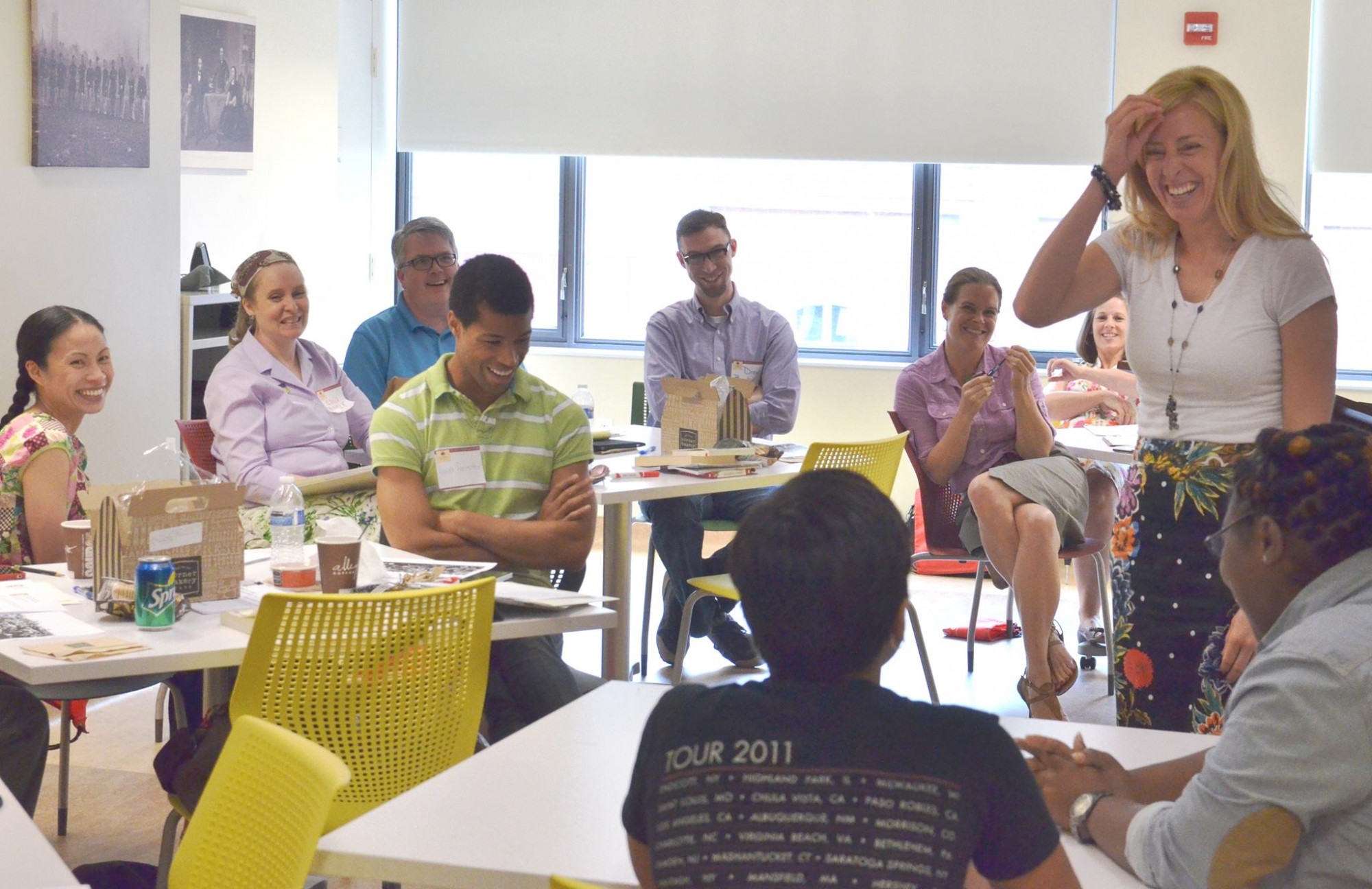
Improving Museum Education Programs Using Analytics (Or, how I learned to stop worrying & love data)
In 2014, Ford’s Theatre created a digital strategic plan specifically designed to jumpstart organization-wide use of digital tools to better engage visitors.
Magically, the digital strategy included explicit language to make certain that every initiative would include funding for both marketing and evaluation. This mandate was meant to prevent a common problem: those two things are often what gets dropped when funding gets low, and without them, it’s hard either to reach an audience or to tell if and how you’ve reached one.

At the time – now four years ago – I thought I knew what that meant: hiring outside evaluators to do qualitative studies to measure the effectiveness of our work, and better collaborating with our marketing department. Over the last three years, I’ve learned that digital tools allow us to collect and analyze certain kinds of quantitative data on our own. For example, our department now actually collects and analyzes user data from our website and social media platforms. We pull more detailed data from our new customer relationship management (CRM) platform in a way that lets us target audiences, analyze online resource usage and test communications with our teacher audiences. It has truly transformed our relationship with our marketing and communications department and made us data-driven in ways I would never have imagined possible.
What does this look like in practice? Here are some ways we’ve changed our behavior in the last few years.
Website content
Scroll Depth
Using Google Analytics, we’ve learned how far website visitors scroll down individual pages on our site. This is especially important on the history content pages, where we’ve long debated whether to place content on one page or spread content across many pages. To tackle this debate in web design, we’ve worked with our marketing department and outside consultants to set up methods to measure what percentage of visitors reach certain points on a specific page. This allows us to test whether there are changes to scroll depth based on use of different design modules – like annotated images, primary source accounts, etc.

Based on guidance from our analytics consultant, we and our consultants with Capacity Interactive believe this to be a more accurate metric of visitor engagement than dwell time, since people (like me) can leave web pages open for hours at a time or save pages or articles to outside platforms like Instapaper or Pocket for later reading. By discussing analytics with our communications team and testing qualitative methods like user surveys, we are able to experiment with creating different kinds of web content and determine what is most engaging for our visitors.
PDF Downloads
We use PDF download analytics as a measure of which of our education lessons and resources are most appealing to visitors – primarily, in the case of our department, K-12 teachers. While some data is unsurprising – like that our eighth-grade assassination lesson is the most popular download – other things have surprised us and led to new insights.

For instance, our lesson on teaching the rhetorical triangle (a key element of our oratory programs) has gotten more hits and downloads than any other pdf besides the assassination lesson. The visitors to this site are coming to us through Google searches, not from within the Ford’s domain. This has led us to realize there is a demand among teachers for resources to teach elements of persuasion and speaking, and we are using that insight to spur further lesson development.
Search Engine Optimization
In addition to determining next steps in designing additional lessons, the insight about the rhetorical triangle helped our team discover that we should keep our lesson and article titles descriptive rather than cute. In the past, we tended to make puns or otherwise be charming in our titles. But as journalists have found, we need to use key words and summaries to help internet searchers find our content first. Thus, we have become much more deliberate about how new resources are titled and explained online.

Enews
Articles
With the help of analytics from our email provider Wordfly, we can use a click-tracking heat map to determine which items are getting the most attention from our subscribed teachers. This, in turn, helps us prioritize what content to share and how to share it in our next outreach.
Email Send Time
During early 2018, we decided to do an “A/B” test with our teacher emails. We sent half of the emails to our education subscribers at 7:00 a.m. and the other half at 7:00 p.m. We weren’t sure if teachers would open emails upon their arrival at school in the morning or in the evening at home. Lo and behold, we found that a greater number of teachers opened the email at 7 in the evening. So, from now on, we have shifted our sending time for emails accordingly.
Year-Over-Year Data Analysis
For 10 years our team had kept reservation and attendance records for most education programs using spreadsheets. Two years ago, the institution moved to Tessitura for its Customer Relationship Management database, and we can now easily pull reports showing year-over-year attendance. Last spring, I was able to look at which schools in our region had come to the theatre for field trips both years – and which had come in 2016 and not returned in 2018. While this only told us which schools no longer came and not why, this gave us direction on where to focus our outreach.
Our anecdotal, memory-based data about recurring attendance and teacher loyalty, which resides in our crack museum education team, is now complemented by accessible data that identifies teachers who work with us consistently. And, using this data can help our fundraising efforts, strengthen relationships with loyal teachers and improve outreach to teachers in areas where we aren’t currently successful.
If you had told me five years ago that I would find it exciting to look at digital analytics, I would have laughed. And yet, with the assistance of a patient communications department and a deep commitment from all of us at Ford’s to reach online visitors as broadly and deeply as possible, I’m finding that data really can help us learn where we are succeeding—and not—in fulfilling our mission!
Sarah Jencks is Director of Education and Interpretation at Ford’s Theatre, where she oversees museum and arts education, as well as exhibition development and interpretive resources. She serves on the steering committee for AAM’s EdCom and the Educators and Interpreters Committee for AASLH. You can find her on Twitter at @SarahJencks.

